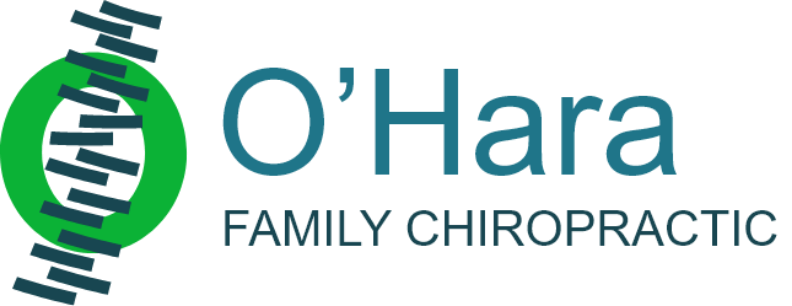Pinched Nerve in the Back: Could It Be Sciatica? Understanding the Connection and Finding Relief
Introduction
A sharp pain shoots down your back. You feel tingling, numbness, or weakness radiating into your leg. Sitting becomes uncomfortable. Walking feels strained. Sound familiar? You may be dealing with a pinched nerve in your back, and quite often, this type of nerve compression is associated with sciatica. But how do you know if what you’re experiencing is sciatica or simply a pinched nerve? The two are closely related — and understanding the difference can help you find the most effective treatment.
At O’Hara Family Chiropractic in Arlington Heights, many of our patients walk through the door describing these exact symptoms. Today, we’ll explore how pinched nerves in the back can lead to sciatica, what causes the condition, and how chiropractic care offers a gentle, non-invasive solution.
What Is a Pinched Nerve?
A pinched nerve occurs when surrounding tissues — such as bones, discs, muscles, or ligaments — apply too much pressure on a nerve. This pressure disrupts the nerve’s normal function, causing symptoms that may include:
-
Sharp or burning pain
-
Tingling or “pins and needles” sensation
-
Numbness
-
Muscle weakness
Pinched nerves can happen anywhere in the body, but when they occur in the lower back (lumbar spine), they often affect the sciatic nerve — the longest nerve in your body.
What Is Sciatica?
Sciatica specifically refers to irritation or compression of the sciatic nerve. This nerve starts in your lower back and travels down each leg, branching into smaller nerves along the way. When compressed, it triggers pain that radiates from your lower back into your hip, buttock, thigh, and sometimes all the way down to your foot.
Common sciatica symptoms include:
-
Shooting pain down one leg
-
Lower back discomfort
-
Burning or tingling sensations
-
Numbness or weakness in the affected leg or foot
-
Worsening pain when sitting, coughing, or sneezing
While sciatica itself is a form of a pinched nerve, not every pinched nerve is sciatica. That distinction is important because proper treatment depends on identifying which nerve is involved.
How a Pinched Nerve Can Lead to Sciatica
In many cases, sciatica is the result of a pinched nerve in the lumbar spine. Here’s how it happens:
-
Herniated or Bulging Disc:
When one of your spinal discs protrudes or ruptures, it can press directly onto the sciatic nerve roots. -
Spinal Stenosis:
This narrowing of the spinal canal puts pressure on the nerves exiting the spine, including the sciatic nerve. -
Degenerative Disc Disease:
As discs wear down over time, the resulting instability may lead to nerve compression. -
Piriformis Syndrome:
The piriformis muscle, located in the buttock, can spasm and compress the sciatic nerve. -
Injury or Trauma:
Accidents, falls, or repetitive strain can all cause vertebral misalignments that lead to nerve compression.
In simple terms: a pinched nerve in your back may cause sciatica if the sciatic nerve itself is involved.
Diagnosis: Is It Sciatica or Another Pinched Nerve?
At O’Hara Family Chiropractic, we start by taking a thorough history and conducting a physical examination. In some cases, advanced imaging may be recommended to identify:
-
The exact location of the nerve compression
-
Whether the sciatic nerve or another spinal nerve root is affected
-
The underlying cause (disc herniation, spinal stenosis, etc.)
A precise diagnosis allows us to build a customized care plan focused on your specific condition.
How Chiropractic Care Can Help Pinched Nerves and Sciatica
Many patients seek chiropractic care because it provides a non-invasive, drug-free approach to treating pinched nerves and sciatica. Here’s how chiropractic can help:
1. Spinal Adjustments
Chiropractic adjustments realign the spine, relieving pressure on compressed nerves and restoring normal joint function.
2. Spinal Decompression Therapy
Decompression gently stretches the spine, helping herniated or bulging discs retract and reduce pressure on the sciatic nerve.
3. Soft Tissue Therapy
Targeted muscle work can reduce inflammation and tension around irritated nerves, especially in conditions like piriformis syndrome.
4. Postural and Movement Coaching
Poor posture and movement habits often contribute to spinal imbalances. We coach patients on how to sit, stand, and move properly to avoid aggravating pinched nerves.
5. Corrective Exercises
Strengthening core muscles improves spinal stability, helping prevent future flare-ups.
When to Seek Help
If you’re experiencing any of the following, don’t wait:
-
Persistent lower back or leg pain
-
Numbness or tingling in your legs or feet
-
Weakness that affects walking or standing
-
Pain that disrupts your daily life or sleep
Ignoring nerve compression can lead to worsening symptoms over time. Early care increases your chance for full recovery.
Why Choose O’Hara Family Chiropractic?
At O’Hara Family Chiropractic in Arlington Heights, we combine modern chiropractic techniques with personalized care. We take time to fully evaluate your condition, educate you about your body, and develop a customized plan to get you back to living pain-free.
Whether you’re dealing with a pinched nerve, sciatica, or ongoing back pain, we’re here to help.
Conclusion
A pinched nerve in your back can be painful, frustrating, and limiting. When it involves your sciatic nerve, it becomes even more complicated — but you don’t have to live with the pain. Chiropractic care offers safe, gentle, and effective solutions to relieve nerve compression and restore function.
If you’re in Arlington Heights or nearby, call O’Hara Family Chiropractic today. Let’s start your journey back to comfort, mobility, and better health.
